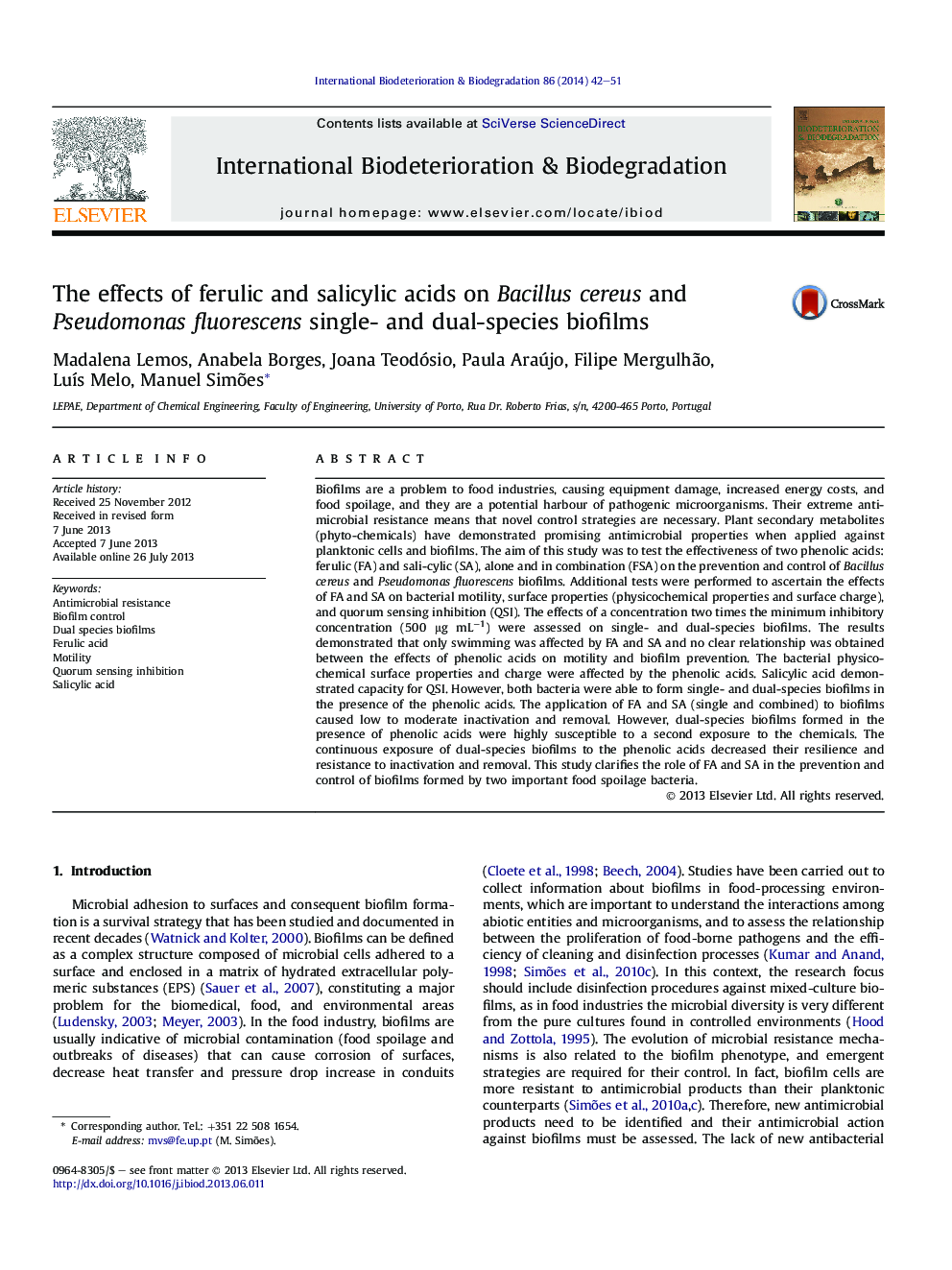| کد مقاله | کد نشریه | سال انتشار | مقاله انگلیسی | نسخه تمام متن |
|---|---|---|---|---|
| 6289416 | 1301730 | 2014 | 10 صفحه PDF | دانلود رایگان |

- Ferulic and salicylic acids affected swimming motility.
- Ferulic and salicylic acids affected bacterial surface charge and hydrophobicity.
- Salicylic acid had quorum sensing inhibition properties.
- The phenolics had low to moderate ability to control single species biofilms.
- The phenolics had ability to control dual species biofilms.
Biofilms are a problem to food industries, causing equipment damage, increased energy costs, and food spoilage, and they are a potential harbour of pathogenic microorganisms. Their extreme antimicrobial resistance means that novel control strategies are necessary. Plant secondary metabolites (phyto-chemicals) have demonstrated promising antimicrobial properties when applied against planktonic cells and biofilms. The aim of this study was to test the effectiveness of two phenolic acids: ferulic (FA) and sali-cylic (SA), alone and in combination (FSA) on the prevention and control of Bacillus cereus and Pseudomonas fluorescens biofilms. Additional tests were performed to ascertain the effects of FA and SA on bacterial motility, surface properties (physicochemical properties and surface charge), and quorum sensing inhibition (QSI). The effects of a concentration two times the minimum inhibitory concentration (500 μg mLâ1) were assessed on single- and dual-species biofilms. The results demonstrated that only swimming was affected by FA and SA and no clear relationship was obtained between the effects of phenolic acids on motility and biofilm prevention. The bacterial physicochemical surface properties and charge were affected by the phenolic acids. Salicylic acid demonstrated capacity for QSI. However, both bacteria were able to form single- and dual-species biofilms in the presence of the phenolic acids. The application of FA and SA (single and combined) to biofilms caused low to moderate inactivation and removal. However, dual-species biofilms formed in the presence of phenolic acids were highly susceptible to a second exposure to the chemicals. The continuous exposure of dual-species biofilms to the phenolic acids decreased their resilience and resistance to inactivation and removal. This study clarifies the role of FA and SA in the prevention and control of biofilms formed by two important food spoilage bacteria.
Journal: International Biodeterioration & Biodegradation - Volume 86, Part A, January 2014, Pages 42-51